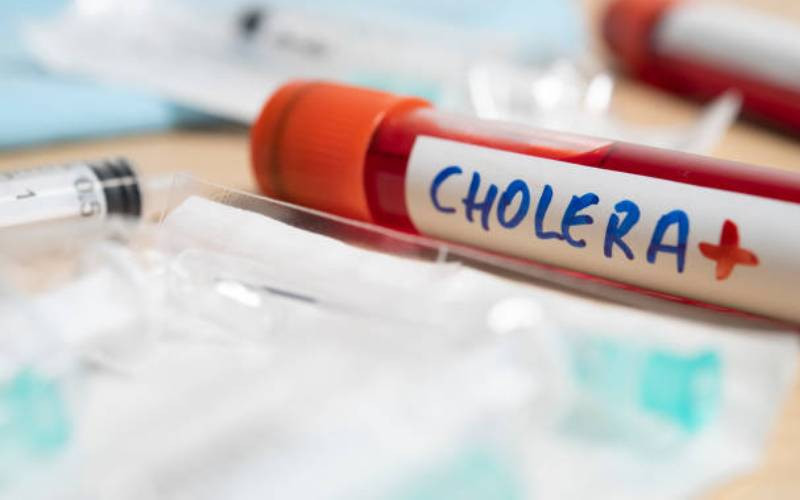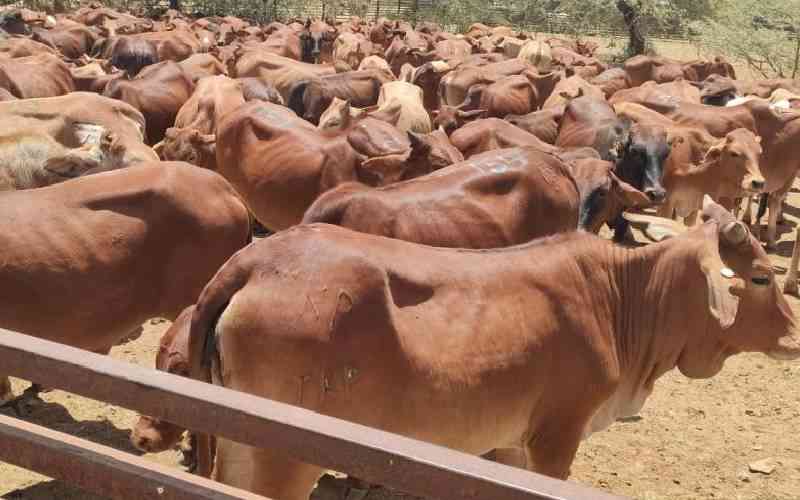
The Ministry of Health has attributed cholera deaths and a surge in cases to inadequate resources to facilitate testing of the disease.
Shortage of laboratory re-agents also hampers the fight against the disease.
"Inadequate resources to facilitate critical response pillars limiting response capacity in detecting, investigating, and follow-up of cases, especially lack of laboratory re-agents," reads a section of the situation report.
Other challenges include the inadequate capacity of healthcare workers trained in cholera case management and competing activities.
The competitive activities listed by the Ministry include response to drought in high-risk counties.
Locals in drought-hit counties lack clean drinking water, an issue that is highly contributing to the spread of the disease.
According to the cholera situation report released over the weekend, the country has reported a total of 6, 391 cases and 99 deaths.
A total of 3, 255 of the cumulative cases are males while 3, 136 are females, and 2,364 children, in the age bracket of 0 to 10 years.
- WHO: Liberia, Benin, Sierra Leone roll out malaria vaccine
- Ministry issues cholera alert amid floods, medics' strike
- Dozens of cholera cases reported in flood-hit Kenya
- Mass mosquito net distribution kicks off in Tana River County
Keep Reading
A total of 1, 800 of the cumulative are children under 5 years, and of the numbers, 1,176 are those below the age of two years.
Of the 99 deaths, 76 per cent are males and 23 per cent are females.
The outbreak was first reported in the country in October in Kiambu County and has spread to 17 counties.
Counties, where the disease has been reported, include Garissa (2,112), Mandera (1,039), Nairobu (887), Tana River (744) Wajir (538), Kiambu (393), Machakos (281), Kajiado (101), Meru (85), Nyeri (55), Homa Bay (51), Murang'a (40), Kitui (27), West Pokot (16), Nakuru (11) Uasin Gishu (8).
Cholera is an acute bacterial disease which presents with because of diarrhoea, as a result of consuming food which is contaminated with the bacterium Vibrio cholerae.
The disease causes severe acute watery diarrhoea, vomiting, and dehydration which leads to death, if not treated on time.
A number of risk factors driving the disease namely outsourcing of food vendors with questionable hygiene standards, congestion in the refugee camps and sourcing of water from contaminated sources due to the prolonged drought.
Other factors as per experts include poor sanitation in informal urban settlements and the sprouting of unregulated water vendors.
To prevent deaths and new cases, the Ministry rolled out Oral Cholera Vaccine in four counties, which were considered the epicentre of the disease.
At least 2.2 million people have been vaccinated in the Tana River, Wajir, Nairobi and Garissa.
The head of immunisation at the Ministry of Health Dr Lucy Mecca said vaccination has been a success.
She called on the public to observe other prevention measures, to eliminate the disease.
"We vaccinated at least 99 per cent of the target population. However, vaccination is only one component in the prevention of cholera. The public should observe a high rate of sanitation, to totally eliminate the disease," she said.
 The Standard Group Plc is a multi-media organization with investments in media platforms spanning newspaper print
operations, television, radio broadcasting, digital and online services. The Standard Group is recognized as a
leading multi-media house in Kenya with a key influence in matters of national and international interest.
The Standard Group Plc is a multi-media organization with investments in media platforms spanning newspaper print
operations, television, radio broadcasting, digital and online services. The Standard Group is recognized as a
leading multi-media house in Kenya with a key influence in matters of national and international interest.











